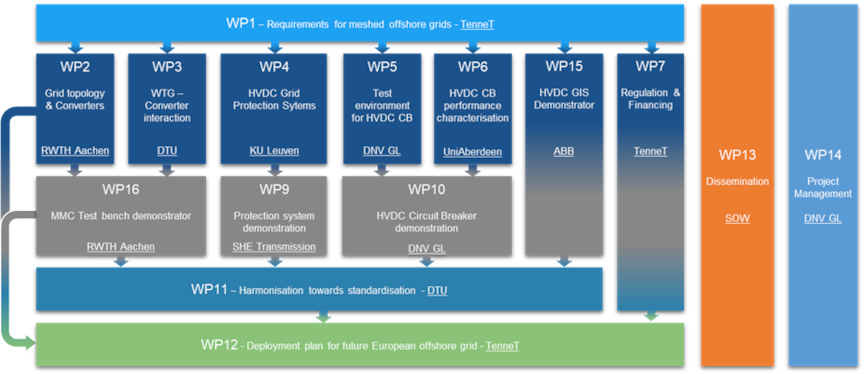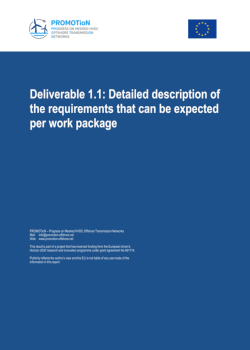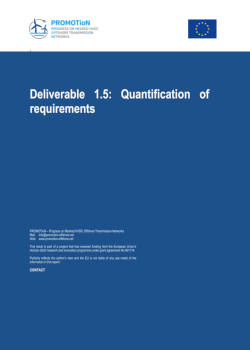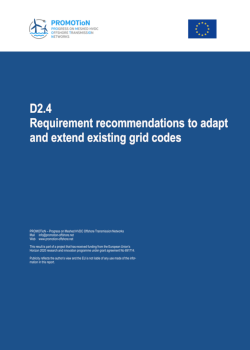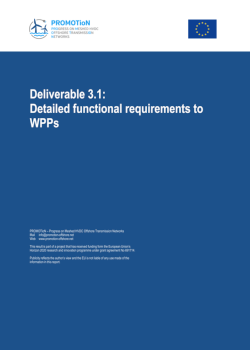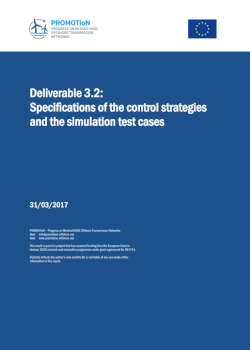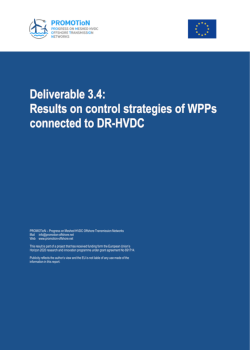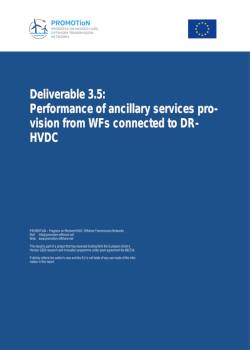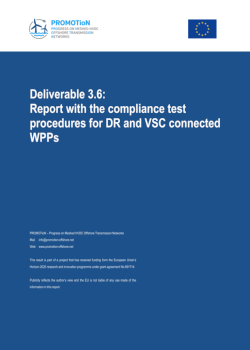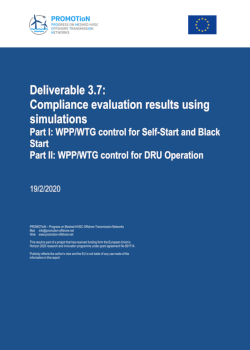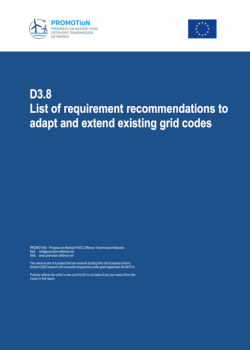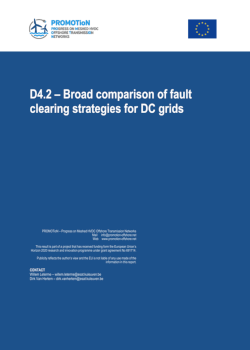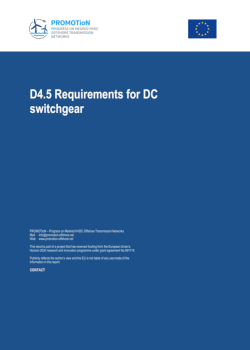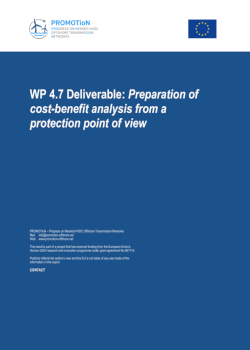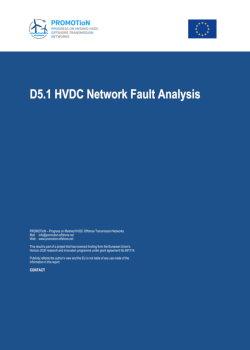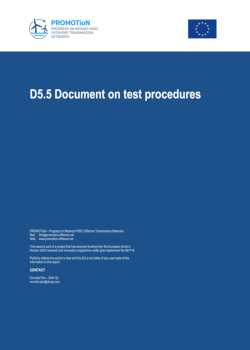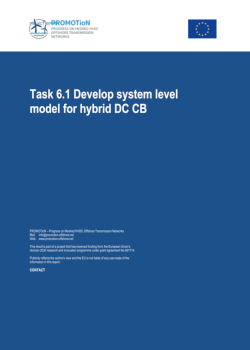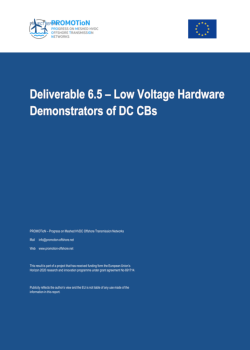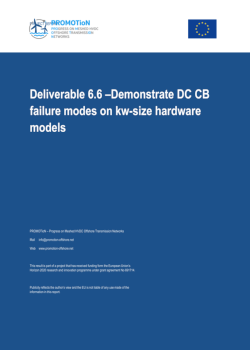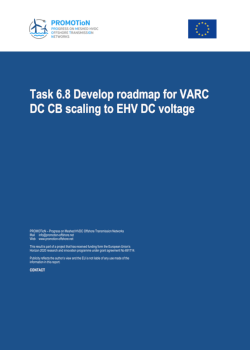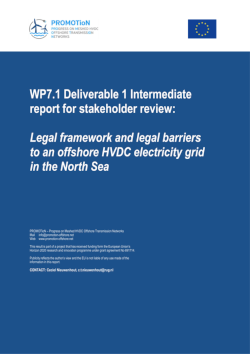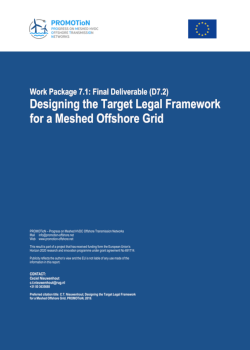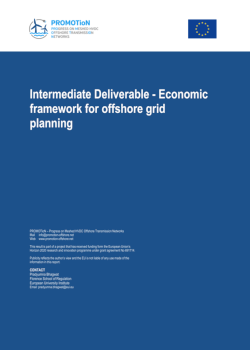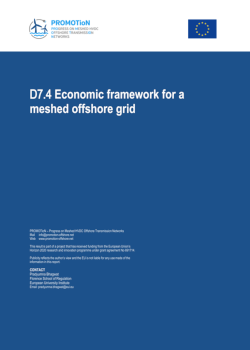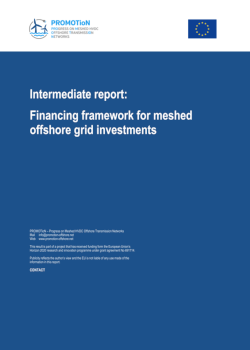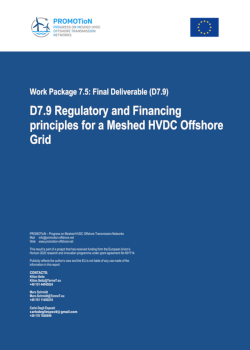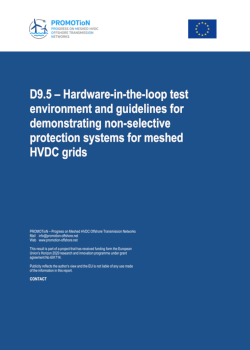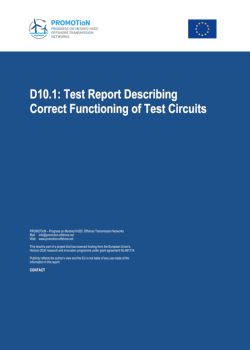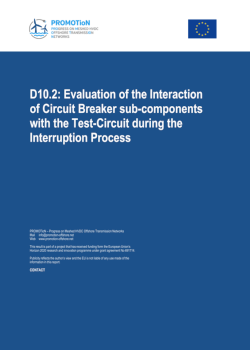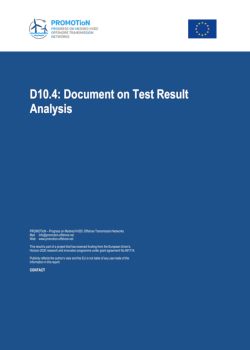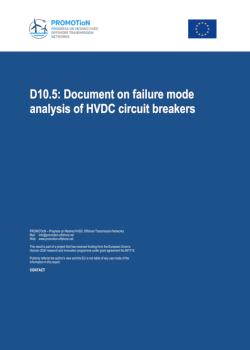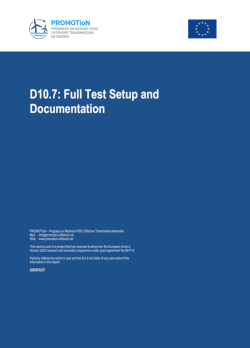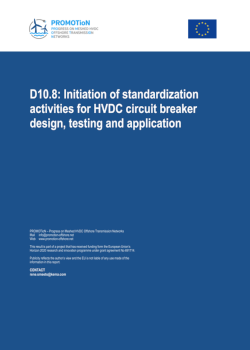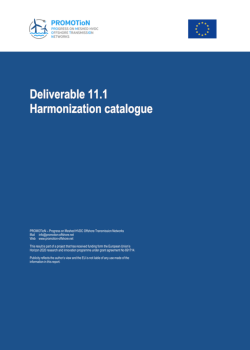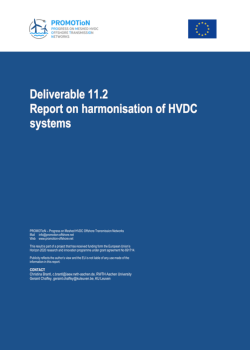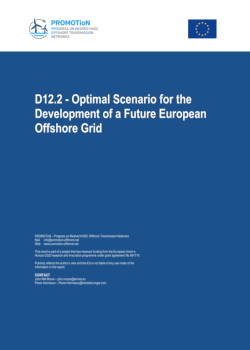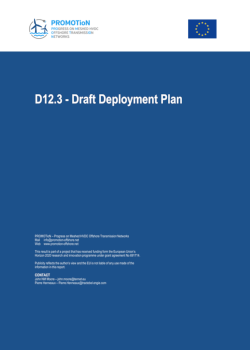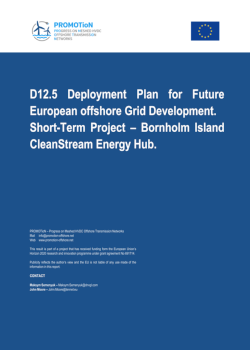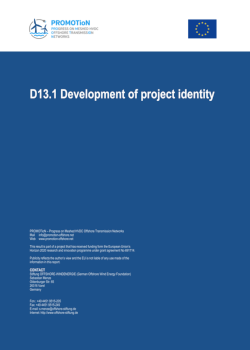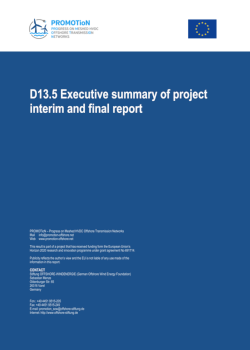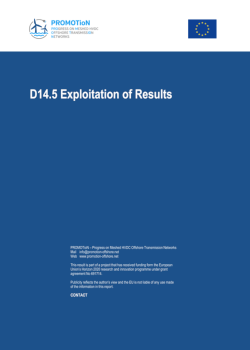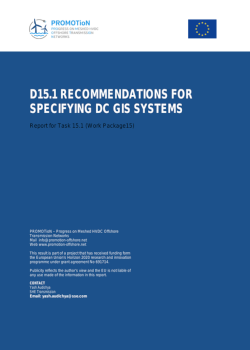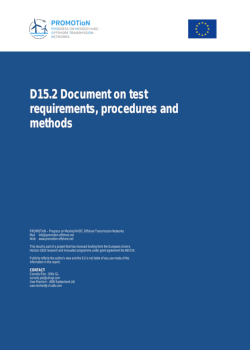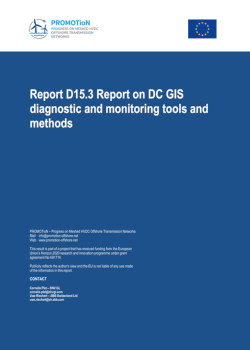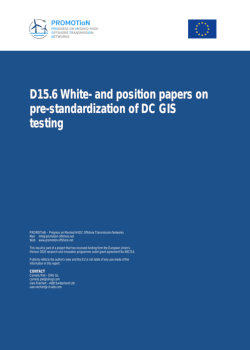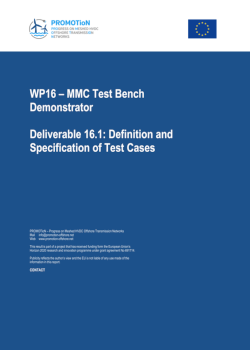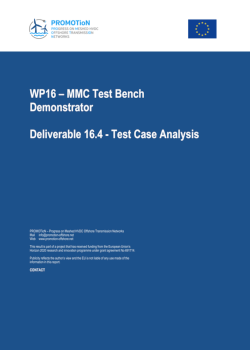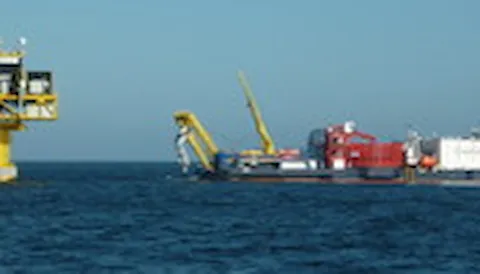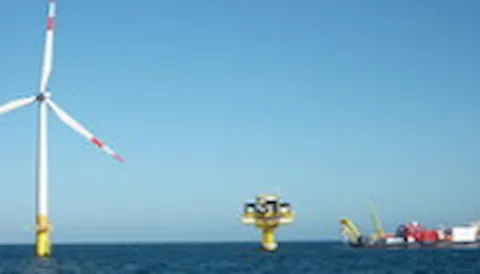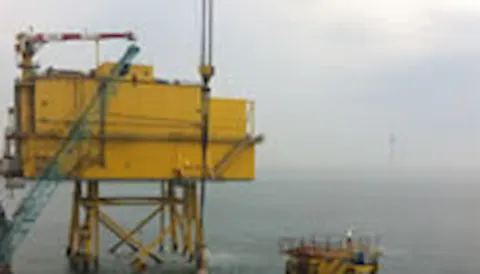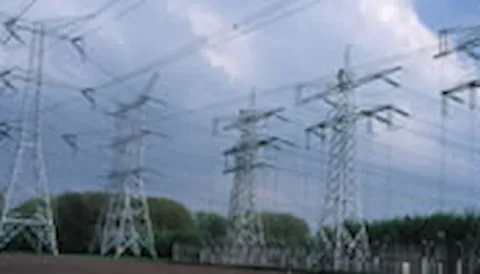PROMOTioN: Progress on Meshed HVDC Offshore Transmission Networks
PROMOTioN seeks to develop meshed HVDC offshore grids on the basis of cost-effective and reliable technological innovation in combination with a sound political, financial and legal regulatory framework.
The project ‘PROgress on Meshed HVDC Offshore Transmission Networks’ (PROMOTioN) applied in 2015 for funding under the EU Horizon 2020 (H2020) programme call ‘Competitive Low-Carbon Energy’ 5 (LCE 5). Within the framework of modernisation of the European electricity grid, this call focused on advancing innovation and technologies relevant to the deployment of meshed offshore HVDC grids. Its specific objective is to pursue an agreement between network operators and major equipment suppliers regarding a technical architecture and a set of multi-vendor interoperable technologies in order to accelerate HVDC grid development.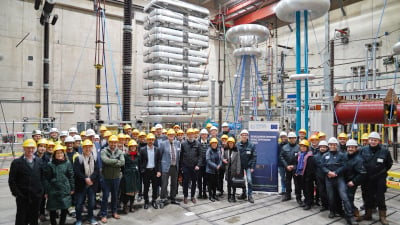
PROMOTioN actively addresses the objectives that LCE 5 encompasses. Specifically, these are to:
- Identify requirements for energy infrastructure priority corridors
The requirements embrace a broad range of issues, such as the design, development and deployment of the energy infrastructure from a technical, financial, regulatory, management and policy perspective. - Facilitate agreement among operators and manufacturers
Manufacturers and operators need to agree on architectures, control structures and interfaces in order to ensure interoperability and multi-vendor compatibility of equipment. - Demonstrate cost-effective HVDC network technologies
Full-scale and industrially relevant demonstrations will be carried out of novel & innovative components required to enable the realisation of a meshed HVDC transmission network:- HVDC circuit breakers
- HVDC gas insulated switchgear
- HVDC network protection systems
- HVDC network control strategies
- Harmonic performance of wind turbine generators
- Prepare the first phase for deployment of innovative components…
… of interoperable meshed offshore HVDC network technologies, services and tools architectures. - Propose market rules and revenue streams…
… to help establish a suitable package of financial resources - Propose regulations for permitting and environmental compatibility
PROMOTioN aims to set up a regulatory framework for operation and management of meshed offshore grids governing legal, technical, and market-related aspects.
Context
A meshed European offshore transmission grid connecting offshore wind farms to shore could provide significant financial, technical and environmental benefits to the European electricity market. Launched in January 2016, PROMOTioN aims to explore and identify these potential benefits.
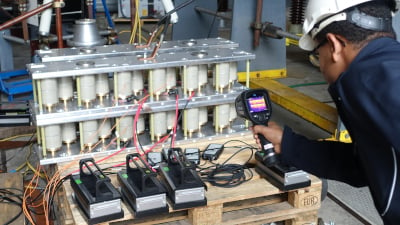 The main objective of PROMOTioN is the further development and demonstration of three key technologies: multi-vendor HVDC (high-voltage direct current) network protection systems, HVDC network control systems, long duration testing of HVDC GIS (gas insulated switchgear) and full power testing of HVDC circuit breakers. Complementary to this end, a regulatory and financial framework will be developed for the coordinated planning, construction and operation of integrated offshore infrastructures, including an offshore grid deployment plan (roadmap) for the future offshore grid system in Europe.
The main objective of PROMOTioN is the further development and demonstration of three key technologies: multi-vendor HVDC (high-voltage direct current) network protection systems, HVDC network control systems, long duration testing of HVDC GIS (gas insulated switchgear) and full power testing of HVDC circuit breakers. Complementary to this end, a regulatory and financial framework will be developed for the coordinated planning, construction and operation of integrated offshore infrastructures, including an offshore grid deployment plan (roadmap) for the future offshore grid system in Europe.
Currently, the high cost of converter technology, and a lack of experience with protection systems and fault clearance components, hamper the deployment of meshed HVDC offshore grids. In addition, deployment is hindered by limitations inherent to existing European regulations regarding the development of cross-border offshore infrastructures, national legal and regulatory barriers, and financing issues.
Timetable and Workpackages
PROMOTioN ran over a period of four years. The project is organised in a total of 16 work packages (WP‘s), which are closely interlinked. Laying the foundation by identifying the requirements for meshed offshore grids, WP 1 commenced with the kick-off of the project. WP 2-7 build upon the findings of WP 1 with the implementation of requirements for the project and examination of specific technology issues in detail. These range from grid topology to grid protection systems (WP 2-6) as well as regulatory aspects and financing (WP 7). On the basis of WP 2-6, WP 9-10, 15-16 implement demonstrator and pilot facilities after completion of WP 2-6, in turn leading to WP 11 which addresses harmonization towards standardization. The results from WP 7 and 11 will jointly determine the development of a final deployment plan for the future meshed HVDC offshore grid. The project is flanked by WP 13 and 14, which have the task of dissemination (13) and overall project management (14).
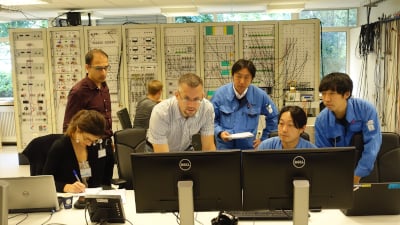 Workpackage 8, which was aimed at realising a full-scale demonstrator of a diode rectifier unit (DRU) based wind farm export solution at the Klim wind farm in Denmark, was prematurely terminated for technical reasons. Siemens is continuing to develop the concept towards technical maturity. PROMOTioN continues to consider the DRU as a potential cost-saving technology for future wind farm export solutions. The grid integration and control of the concept is continued to be studied in workpackage 2 and 3, and a small-scale demonstrator is included in the MMC test bench in workpackage 16.
Workpackage 8, which was aimed at realising a full-scale demonstrator of a diode rectifier unit (DRU) based wind farm export solution at the Klim wind farm in Denmark, was prematurely terminated for technical reasons. Siemens is continuing to develop the concept towards technical maturity. PROMOTioN continues to consider the DRU as a potential cost-saving technology for future wind farm export solutions. The grid integration and control of the concept is continued to be studied in workpackage 2 and 3, and a small-scale demonstrator is included in the MMC test bench in workpackage 16.
